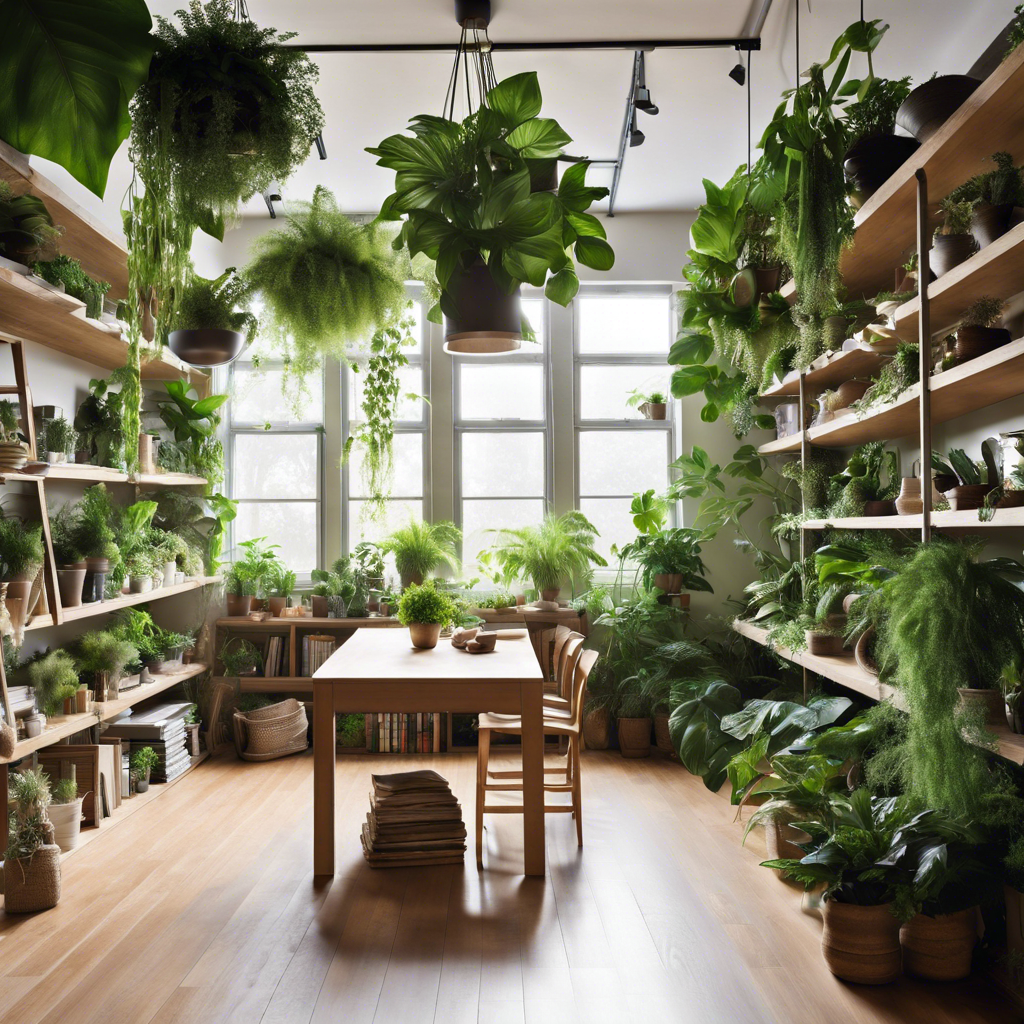
Indoor plants
Calathea – The Ultimate Guide to Growing and Caring for This Stunning Indoor Plant


DINKAR
10/22/2024
Introduction
Calathea, known for its vibrant and intricate leaf patterns, has become a favorite among houseplant enthusiasts and interior decorators alike. With its stunning foliage and unique characteristics, the Calathea family offers a variety of species that can enhance any indoor space. However, despite its beauty, Calathea is often misunderstood in terms of care, making it essential for plant lovers to understand how to nurture these tropical beauties properly.
In this comprehensive guide, we’ll explore everything you need to know about Calathea, including its types, care requirements, propagation methods, and the numerous benefits of keeping these plants indoors. Whether you’re a seasoned plant parent or a newcomer to the world of houseplants, this guide will equip you with the knowledge to successfully grow and care for Calathea.
1. What is Calathea?
Calathea is a genus of perennial plants belonging to the Marantaceae family, native to the tropical regions of Central and South America. They are known for their striking foliage, which features vibrant patterns, colors, and textures. Commonly referred to as “prayer plants,” Calatheas are named for their unique behavior; their leaves tend to rise and fold at night, resembling hands in prayer.
Calatheas thrive in humid environments, making them ideal for indoor gardening, especially in homes with higher humidity levels. With numerous species and varieties available, Calathea can cater to various aesthetic preferences, making them a perfect addition to any plant collection.
2. Types of Calathea
Calathea comes in a diverse array of species, each boasting its own unique beauty. Here are some of the most popular types of Calathea:
- Calathea Orbifolia: This variety features large, round leaves with bold, silvery stripes that create a stunning visual impact. It's known for its ability to thrive in lower light conditions.
- Calathea Medallion (Calathea veitchiana): With dark green leaves adorned with intricate, light green patterns, the Medallion is a striking choice for any indoor garden.
- Calathea Lancifolia (Rattlesnake Plant): This variety has long, narrow leaves with wavy edges and bold dark green patterns, resembling a rattlesnake’s skin. It’s a popular choice for those seeking a unique plant.
- Calathea Freddie: Known for its vibrant green leaves with deep purple undersides, the Freddie variety has a striking appearance that can elevate any space.
- Calathea Beauty Star: This variety features large, lance-shaped leaves with beautiful white and green markings, making it a favorite for those who appreciate visual diversity.
- Calathea Sanguinea (Red Prayer Plant): With deep green leaves and red veins, the Sanguinea adds a pop of color to any indoor setting.
3. How to Care for Calathea
Calatheas may require a bit more attention than some other houseplants, but their stunning beauty makes it well worth the effort. Here’s a detailed guide on how to care for these magnificent plants:
A. Light Requirements
Calatheas thrive in bright, indirect light. They can tolerate low-light conditions, but prolonged exposure to darkness may cause the vibrant leaf patterns to fade. Avoid placing them in direct sunlight, as this can scorch their delicate leaves. The best spots for Calathea are near east or north-facing windows, where they can receive filtered light.
B. Watering
Watering is crucial for the health of your Calathea. These plants prefer consistently moist soil but dislike being waterlogged. It's best to use distilled or rainwater, as Calatheas are sensitive to chemicals found in tap water, such as chlorine and fluoride.
Check the top inch of the soil; if it feels dry, it’s time to water. Make sure to allow excess water to drain out of the pot to prevent root rot. During the growing season (spring and summer), Calatheas may require more frequent watering, while you can reduce watering in the fall and winter.
C. Humidity and Temperature
Calatheas thrive in high humidity, ideally around 50% to 60%. If your home has low humidity levels, consider using a humidifier, placing a pebble tray filled with water beneath the pot, or misting the leaves regularly to provide the moisture they crave.
As for temperature, Calatheas prefer a warm environment, ideally between 65°F and 80°F (18°C to 27°C). Protect them from cold drafts, sudden temperature changes, and areas with extreme heat, like near radiators.
D. Soil and Potting
A well-draining, lightweight potting mix is essential for Calathea. You can use a standard indoor potting mix with added perlite or orchid bark to improve drainage. Repot your Calathea every 1-2 years or when it becomes root-bound, ensuring that the new pot has drainage holes.
E. Fertilization
To encourage healthy growth, feed your Calathea with a balanced, water-soluble fertilizer every 4-6 weeks during the growing season. Avoid fertilizing during the fall and winter months, as the plant's growth naturally slows down.
4. Propagating Calathea
Propagation is a great way to expand your Calathea collection or share plants with friends. The most common method for propagating Calathea is through division.
Step-by-Step Propagation Guide:
- Choose a Healthy Plant: Select a mature Calathea that has several stems and healthy roots.
- Remove the Plant from its Pot: Gently take the plant out of its pot, being careful not to damage the roots.
- Divide the Root Ball: Using your hands or a clean knife, separate the root ball into smaller sections, ensuring each section has roots and at least one stem.
- Replant the Sections: Plant each division into its own pot with fresh, well-draining soil. Water thoroughly and place them in a warm, humid location.
- Care for the New Plants: Continue to care for the newly propagated Calathea as you would for the parent plant.
5. Common Problems and Solutions
Despite their beauty, Calatheas can encounter some issues. Here are common problems and solutions to keep your plant thriving:
- Brown Leaf Tips: This can be caused by low humidity or underwatering. Increase humidity levels and check your watering routine to ensure the plant is consistently moist.
- Yellow Leaves: Yellowing leaves may indicate overwatering or a lack of nutrients. Check the soil moisture and adjust your watering schedule, and consider fertilizing if you haven’t done so recently.
- Leaf Curling: Curling leaves may result from inadequate light or extreme temperature fluctuations. Ensure your Calathea is in a suitable light location and away from drafts.
- Pests: Common pests include spider mites, aphids, and mealybugs. Regularly inspect your plant for pests, and if you notice an infestation, treat it with insecticidal soap or neem oil.
6. Benefits of Having Calathea Indoors
Beyond their stunning appearance, Calatheas offer numerous benefits for indoor living:
- Air Purification: Like many houseplants, Calatheas help improve indoor air quality by filtering out toxins and pollutants.
- Aesthetic Appeal: With their unique patterns and vibrant colors, Calatheas can enhance the beauty of any space, making them a popular choice for home decor.
- Mood Enhancer: Studies show that having plants indoors can reduce stress, improve concentration, and enhance overall well-being.
Conclusion
Calathea is a stunning addition to any indoor garden, known for its vibrant foliage and unique growth habits. With the right care, these plants can thrive and bring life to your living space. Whether you choose a Calathea Orbifolia, Medallion, or Rattlesnake, understanding their specific needs will help you maintain a healthy, beautiful plant.
Embrace the beauty of Calathea and enjoy the many benefits these tropical plants offer. With a little attention and care, your Calathea will flourish, becoming a stunning centerpiece in your indoor oasis.